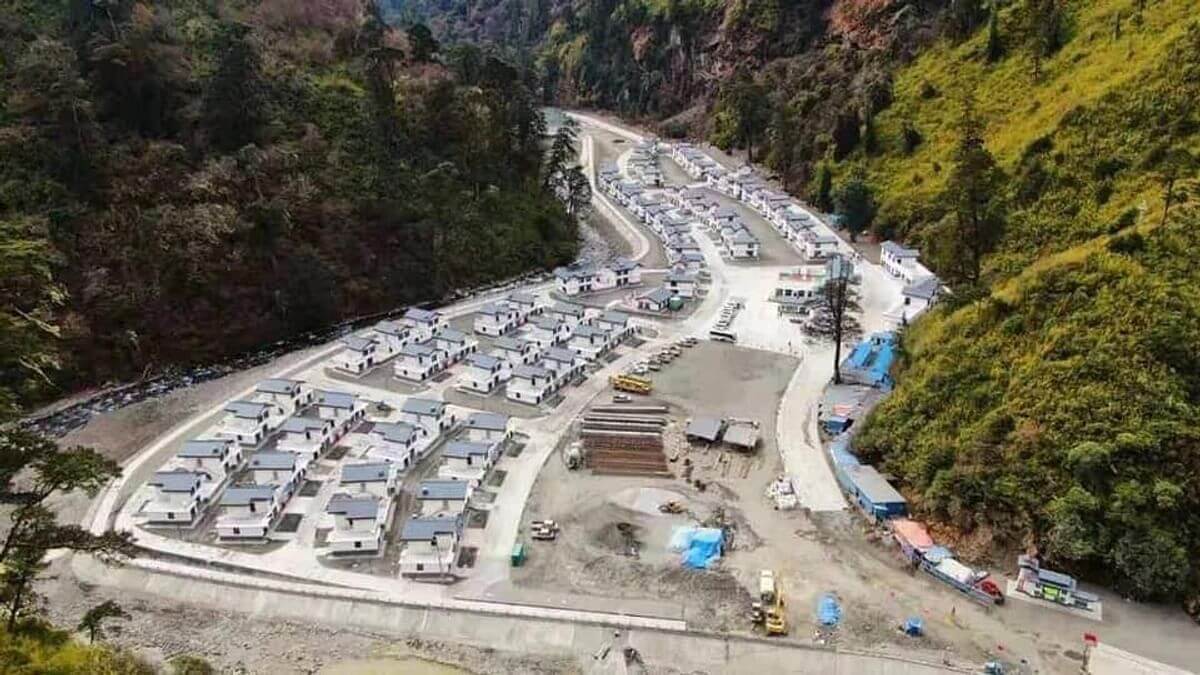Recent satellite images have shown China to be constructing villages within the Indian state of Arunachal Pradesh, located on the banks of the Tsari Chu river in the Upper Subansiri district, which lies in the area disputed between India and China. Reacting to a report that accused China of illegal construction within sovereign Indian territory, on Thursday, the Chinese Foreign Ministry issued a statement saying that construction activity within “its own territory” is “normal”.
Chinese Foreign Ministry spokesperson Hua Chunying told a media briefing: “China’s position on the east sector of the China-India boundary, or Zangnan region (the southern part of China's Tibet), is consistent and clear. We have never recognised the so-called Arunachal Pradesh illegally established on the Chinese territory.”
While India has consistently claimed that the northeastern state of Arunachal Pradesh is an “integral and inalienable” part of the country, China claims Arunachal Pradesh as part of southern Tibet. Based on this claim, Hua added that the construction, which currently includes about 101 houses and lies 4.5 kilometres within Indian territory, “is entirely a matter of sovereignty.”
The Indian government has acknowledged the presence of this village, with the Ministry of External Affairs (MEA) saying that New Delhi was “keeping a constant watch” on the activity that impacts the country’s national security. Moreover, the ministry added that it was “taking necessary measures to safeguard its sovereignty and territorial integrity”. It also said that the Indian side is building border infrastructure, including roads and bridges, “for the improvement of livelihood of its citizens”. Beijing has retorted saying that New Delhi was only “trying to hype news about the village”.
Chinese construction along the highly contentious border is not unprecedented. Just recently in November, satellite images showed the development of a new village by China along the contested Himalayan border that it shares with India and Bhutan. The cluster of houses, which is referred to as the Pangda village, is located 9 kilometres from the Doklam plateau. This area is strategically important to India and was also the site of a conflict with China in 2017, when Indian and Chinese troops engaged in a 73-day stand-off, triggering fears of war at the time. This was viewed as the most serious example of escalation of the conflict since the 1962 War and was also triggered by China constructing roads in the region. India has claimed that the Pangda village lies at least 2 kilometres within sovereign Bhutanese territory. However, the Chinese media house, Global Times, asserted that the Pangda village was “within the Chinese territory”.
Skirmishes stemming from border disputes have been a common occurrence along the Indo-China border. China has been trying to increase its military presence and illegal construction activities in the region with the aim to secure easy access to the vulnerable and narrow Siliguri Corridor and the Chumbi Valley, where India currently has a terrain advantage. The current construction is a continuation of China’s aggressive build-up along the disputed border.
China Dismisses Reports of Construction in Arunachal Pradesh
China dismissed reports claiming that it had been building a village within the Indian state of Arunachal Pradesh, claiming that the construction was within its own sovereign territory.
January 22, 2021

SOURCE: FACEBOOK
